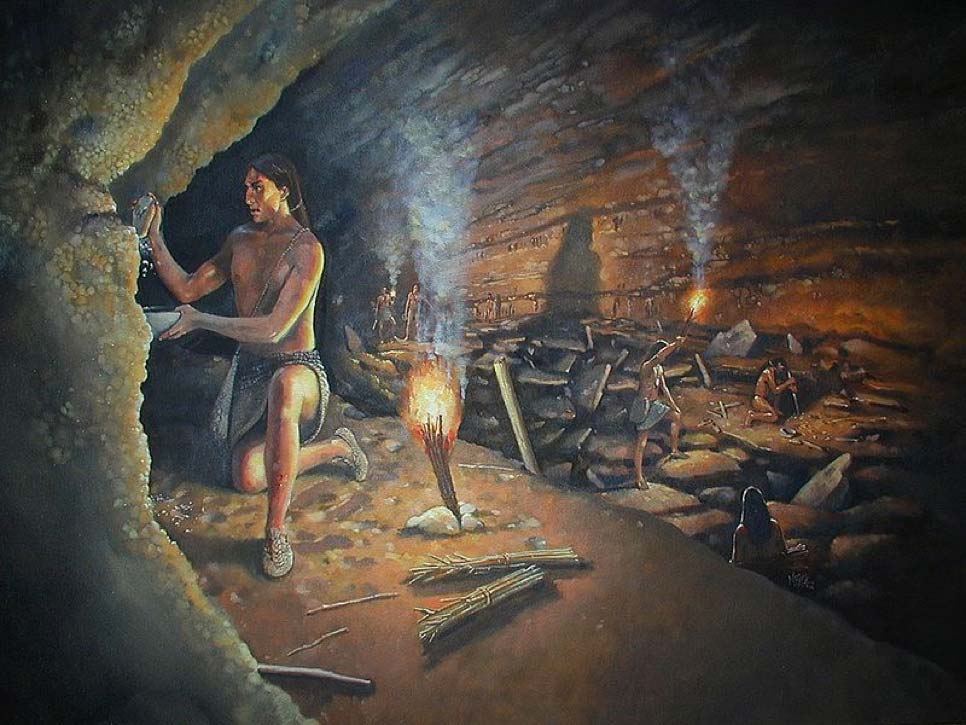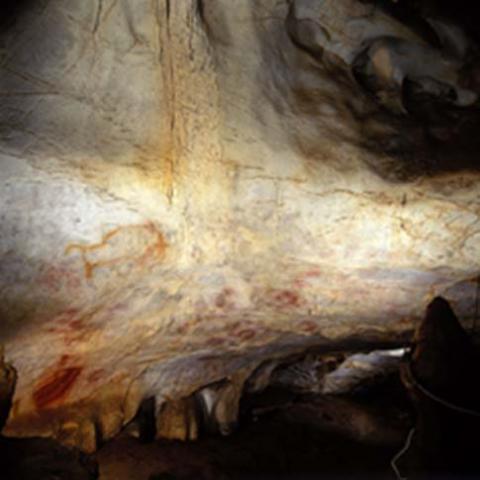
Ancient Expressions: The World’s Oldest Works of Prehistoric Art
Creating abstractions of reality, art has been a part of human expression for hundreds of thousands of years. Prehistoric stone and bone sculptures, and cave art are ideas and emotions expressed through visual projection, and it was initially believed by archaeologists that the oldest art works and paintings existed mainly in Europe, until the discovery of cave art in Indonesia, and sculpture and cave art in Africa. The term ‘ancient art’ may refer to the many different types of art produced by the advanced cultures of ancient China, India, Mesopotamia, Persia, Palestine, Egypt, Greece and Rome, however the five oldest art works ever discovered belong to a pre-literate culture, and is referred to as prehistoric art.
Cave art, generally, the numerous paintings and engravings found in European caves and shelters dating back to the Ice Age (Upper Paleolithic) roughly between 40,000 and 14,000 years ago, was deemed by experts to be the work of modern humans (Homo Sapiens) and while most examples of cave art have been found in France, Portugal, England, Italy, Romania, Germany, and Russia, nowhere have so many prehistoric artists’ easels been found than in Spain.
El Castillo Cave Paintings, Spain: 39000 BC
The Cueva de El Castillo, or Cave of the Castle, is an archaeological site within the complex of the Caves of Monte Castillo, in Puente Viesgo, on the edge of the Pas River in Cantabria, Spain. A steep conical limestone elevation hides an intricate labyrinth of caves which have been frequented by man for at least the past 150,000 years. Discovered in 1903 by Spanish archaeologist Hermilio Alcalde del Río, who found an extensive sequence of images executed in charcoal and red ochre on the walls and ceilings dating from the Lower Paleolithic to the Bronze Age, and up to the Middle Ages. Over 150 depictions have already been catalogued, including intricately painted deer complete with shadowing, and among the images is the oldest known cave painting anywhere on earth: a large red stippled disk in the Panel de las Manos dated to more than 40,000 years old.

Interior de la Cueva del Castillo en Puente Viesgo, Cantabria (España). (CC BY-SA 3.0)
The interior of the cave contains numerous figures corresponding to the dawn of the presence of Homo Sapiens in Europe, and it represents a subterranean walk through the origins of symbolic thought, from the very beginnings of abstract, artistic thought and expression. The cave’s graphic representations exemplify the techniques of Upper Paleolithic artists between 36000 to 10000 BC, and tells archaeologists much about their world view and what was of the most importance in their cultures. Horses, bison, deer, uros, goats and mammoth, were all executed in a technique known as ‘hand in negative’. Drawings and paintings in red, yellow and black, applied with brushes, airbrushes and fingers and engravings present a wide ranging technical artistic répertoire.
Diepkloof Rock Shelter, South Africa, Symbolic Eggs: 60000 BC
Diepkloof Rock Shelter is located in Western Cape, South Africa situated about 17 kilometers (11 miles) from the Atlantic shoreline in a semi-arid area, near Elands Bay, about 150 kilometers (93 miles) north of Cape Town. Measuring about 25 meters (82 feet) wide and 15 meters (49 feet) deep, located 100 meters (330 feet) above the Verlorenvlei River, facing east, it was first excavated in 1973 by John Parkington and Cedric Poggenpoel and again in 1999 in a collaboration between the Department of Archaeology at the University of Cape Town and the Institute of Prehistory and Quaternary Geology at the University of Bordeaux. It was found to contain one of most complete and continuous sites of inhabitation stretching from before 128000 BC to about 43000 BC.

General view of Diepkloof Rock Shelter site, South Africa. (CC BY-SA 3.0).
In this cave, archaeologists discovered some of the earliest evidence of the use of symbolic forms, or art, painted onto 270 fragments of ostrich eggshell, which made up about 27 water containers with a maximum size of around 20 to 30 millimeters (0.78 to 1.18 inches). The patterns engraved upon the egg containers were dated to around 60,000 years ago and consist of: “lines crossed at right angles or oblique angles by hatching” and anthropologists currently believe that: "by the repetition of this motif, early humans were trying to communicate something, perhaps a system of symbolic representation in which collective identities and individual expressions are clearly communicated, suggesting social, cultural, and cognitive underpinnings that overlap with those of modern people.”




